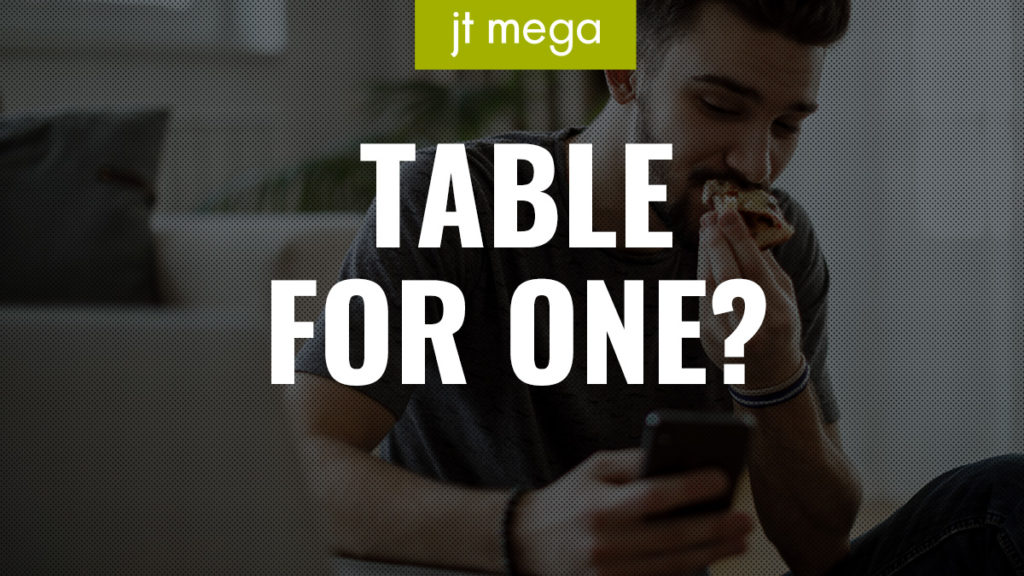If your most recent meal was enjoyed (or simply consumed) in the company of “me, myself, and I”, then you’re not alone. The typical American adult is averaging 7.4 meals alone every week. There’s ongoing and increasing discussion around the pros and cons of this shifting reality. Regardless of its broader social and health impacts, there are a number of observations within this trend that glean a better understanding of consumers, behavioral tendencies and their changing need states.
The thing is, people are quite enjoying their solo eating occasions. In fact, 68% of Americans look forward to eating a meal alone and it’s not strictly for emotional OR rational reasons. The top three benefits to eating alone are: it is more relaxing (50%), busy schedules (44%) and a desire to save money (38%).1 Nearly a third of people say it is strictly for personal pleasure – and many of these consumers are millennials. So, if more people are eating on their own for a myriad of reasons, how do we know what they’re looking for in their experience with food to make the most of the occasion?
When it comes to the primary rational reason – household challenges like schedules – food companies have already begun to create solutions for the rising solo eater. Creating meals and snacks that are portioned for one, that pack a punch when it comes to nutrients (think: high in protein for satiety), that are portable, and a flavor experience that delivers more than the infamous frozen TV dinner.
(Chipotle inspired)
Aside from product innovations to meet the changing consumer need states, is perhaps a bigger opportunity for food and beverage companies. There are obviously underlying implications of a society that shares significantly less meals together. We know that historically, relationships and communities have revolved around breaking bread. The startling thing to me about all these solo eaters is that two in three of them say they don’t actually feel like they’re eating alone….when they’re scrolling through their phones. And at or during 6 of their 6 solo meals they are in fact doing just that1. So, is there a way and a role that food companies can play in understanding this dynamic, and fostering a little more connection at consumption time? At the very least, it’s potentially a “way in” to add more than a functional solution to an occasion that is clearly about more than simply “getting nutrients in”.
1 Byron, Ellen. Wall Street Journal. Eating Alone Loses It’s Stigma. October 2019.
